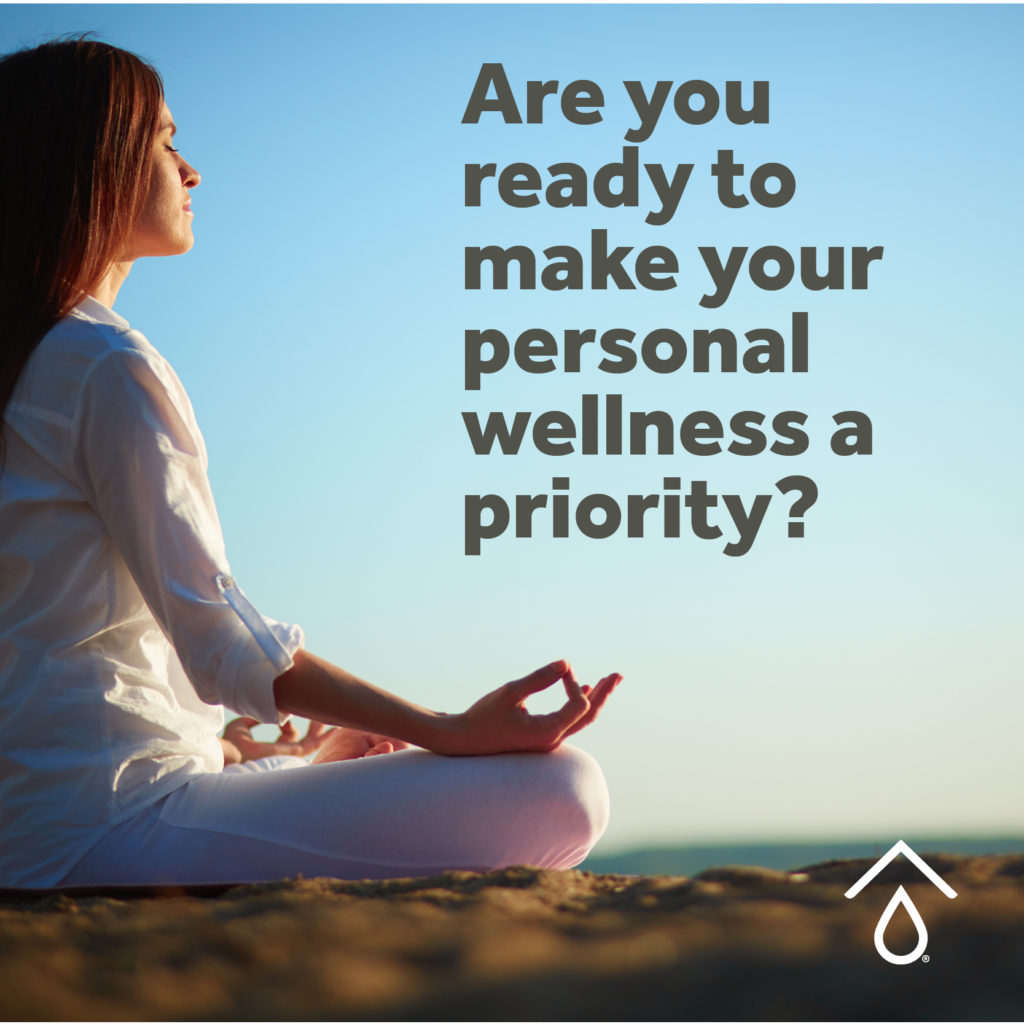As I said in my last blog post, I may have hit a few road blocks getting started on my goals this year. Visit my facebook page for a fun giveaway to help you get started, stay or track, or make it over any hurdles on your health and wellness journey.
If things aren’t going perfectly, you should be aware of some of the common things we do that might actually be sabotaging the path to wellness. I’m sharing Delicious Living’s Health Sabotage: 7 Ways You’re Harming Your Path To Wellness (plus easy fixes). Wherever you are at in your wellness journey, be inspired!
Wellness Sabotages
The things you do every day matter to the health of your body, mind, emotions and even longevity. These seven common stumbles offer no health benefit or worse: negative health consequences. If one or more is part of your daily life, check out solutions to clear your path to wellness.
Sabotage #1: Sleep Debt
Solution: Solve Snooze Time
Sleep aids normal blood pressure, healing, growth and development. Getting good sleep is the most vital thing you can do for your health says Rockland Hinkle, a sleep technician at Boulder Community Sleep Diagnostics in Colorado. Adults generally need seven to nine hours of sleep each night. It’s common for people to accumulate “sleep debt” by cutting short those hours each night. You can easily resolve this with a 20-minute daily nap (the ideal length, according to the National Sleep Foundation).
It’s imperative that sleep remain uninterrupted. You may be waking up because of an undiagnosed disorder, such as sleep apnea, where you repeatedly stop breathing. Treatments for sleep disorders include wearing a sleep mask that pumps pressurized air to open the airways. If you don’t have a serious disorder but still have trouble getting to sleep, consult your doctor about a natural sleep aid such as melatonin. Or try tart cherry juice without added sugar. In one study, participants who drank two cups of tart cherry juice daily showed “significant reductions in insomnia severity” compared with those who drank a placebo.
Sabotage #2: Nature Blindness
Solution: Engage Your Senses
Maybe you do get outdoors, but if you have a cellphone attached to your ear, you need to rethink your choices for restorative adventures. New research shows measurable physical benefits from fully engaging your senses in the great outdoors: Forest dirt microbes are linked to healthy immune systems, inhaled cypress tree compounds reduce stress hormones and blood pressure and birdsong supports brain neuron health.
To achieve wellness, drop the phone, play in the dirt, breathe in the scents and listen to the birds, says Florence Williams, a journalist who describes this research in her new book, The Nature Fix (W.W. Norton & Company, 2017). Williams says, “After writing this book, I understand better the power of these substances in the trees. I think one day we will come to appreciate time in nature as an essential part of our health.”
Sabotage #3: Exercise Overload
Solution: Get Checked
Sometimes too much of a good thing can hurt your health, especially if you ignore warning symptoms. A 2017 study by the Minneapolis Heart Institute Foundation shows that it’s not unheard of for endurance athletes of all levels to push their limits too far.
“Exercise enthusiasts may downplay heart symptoms and feel invulnerable,” says Peter Buttrick, MD, cardiology division head of the University of Colorado School of Medicine. But if you experience heart health symptoms—shortened breath, chest pain, unexpected decreased endurance—during exertion, make an appointment with your doctor.
Sabotage #4: Negative Friends and Family
Solution: Seek What Restores You
The people you spend time with contribute to your emotional and physical health, experts say. It’s easy to get pulled into negativity, says pediatric psychologist Eileen Twohy, PhD. “There is a certain level of satisfaction that comes from negative conversations, gossip and complaining,” she says. “But over time, this leads into patterns of negativity that don’t point in a healthy direction.”
One of the best ways to know if you are stuck in a negative cycle is to go on vacation and see the difference in your body and attitude. Are you suddenly getting good sleep? Do you feel less tension in your body? Once you experience that wake-up call, it’s important to find ways to relax and replenish positive energy, she says. “Children are particularly good at doing this,” says Twohy. “We can all learn how to be more playful and surround ourselves with people who are uplifting and life-giving.”
Because you cannot pick your family, balance a negative day with something positive, she says. This can be going out to walk your dog, exercising or listening to music, she says. Meditation and yoga can also balance and dissipate negative emotions.
Sabotage #5: Water Shortage
Solution: Choose High-Water-Weight Foods
It’s a well-known mantra: Drink eight glasses of water every day to stay healthy and hydrated. But who really hits that goal? According to Johns Hopkins professor of medicine Lawrence Appel, MD, the answer is to eat or drink when you’re thirsty. Appel, who chaired a panel for the National Academies Institute of Medicine’s 2005 report on daily water intake, says, “Drinking water is a frequent choice for hydration. But you can also get water from juice, milk, coffee, tea, fruits and vegetables.”
You can determine whether you need to adjust fluid intake by how you feel, where and how you live and other concrete health indicators. For instance, if you are tired or constipated, drink more fluids or eat foods high in water content, such as watermelon, spinach, tomatoes and broth. You can tell you aren’t getting enough water if your urine appears dark, you feel dizzy or lightheaded or you aren’t thinking clearly. When you feel hungry, drink a glass of water first because you may just be thirsty. Keep a refillable water bottle with you all day. And of course, drink before and after a workout.
Sabotage #6: Conventional Concerns
Solution: Select Wisely
You may buy conventionally grown fruits and vegetables because they’re often cheaper than organic. But pesticides accumulate in the body and eventually create weakened immune systems, says Stephanie Hancock, a registered dietitian nutritionist with Kaiser Permanente.
It’s critical to health to eat fruits and vegetables, but it’s also worth it to be choosy. “I tell people to be selective,” says Hancock. Foods with a thick rind or peel that you don’t eat, such as cantaloupe or avocado, provide a barrier to pesticides. While more delicate, eat-the-skin foods like apples and peaches absorb chemicals into the flesh more easily, she says.
Prioritize your choices. Study the Environmental Working Group’s (EWG) Dirty Dozen, a yearly compilation of the 12 most pesticide-ridden fruits and vegetables based on USDA data, and buy those items in the organic section whenever possible. For 2017, that list names (in order): strawberries, spinach, nectarines, apples, peaches, celery, grapes, pears, cherries, tomatoes, sweet bell peppers and potatoes.
EWG also creates a list called the Clean 15: fruits and vegetables least likely to contain pesticide residues. The list names sweet corn, avocados, pineapples, cabbage, onions, frozen sweet peas, papayas, asparagus, mangoes, eggplant, honeydew melon, kiwifruit, cantaloupe, cauliflower and grapefruit.
Sabotage #7: Noise, Noise, Noise
Solution: Turn It Down (Or Off)
No one thinks about their hearing until they lose it. But today’s environment is increasingly full of loud noise, which contributes to hearing loss. “We are constantly overstimulated by noise,” says clinical audiologist Wendy Framel. “So many people are on their personal devices, streaming music. Our ears get worn down over time, [and now] I’m seeing hearing loss at earlier ages and in younger people.”
Make a point to turn off all sound whenever possible. Upgrade your headphones for better sound quality at lower levels, she says, or get noise-canceling headphones. If you do experience hearing loss, new solutions include Bluetooth hearing aids that connect to your smartphone.
Keep At It!
I’ve been guilty of almost all of these wellness sabotages. Well, maybe not the over-exercising one. But, life – and wellness – is a journey. And when we know better, we do better. So look for ways to get un-stuck from your own wellness sabotages, overcome your hurdles, and keep going!









 My autism journey has changed the way I live and care for my family. I am passionate about nontoxic products, natural remedies, grain-free nutrition, essential oils, and healing the symptoms known as autism. This is a space for anyone aspiring toward cleaner, healthier living.
XO Joanna
My autism journey has changed the way I live and care for my family. I am passionate about nontoxic products, natural remedies, grain-free nutrition, essential oils, and healing the symptoms known as autism. This is a space for anyone aspiring toward cleaner, healthier living.
XO Joanna





